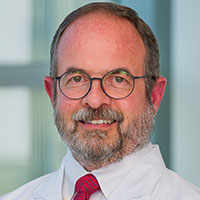New Patient Appointment or 214-645-8300

Robert Bass, M.D. Answers Questions On: Hand Surgery
-
Hand surgeons operate on more than just bone. How do you repair injured ligaments, tendons, and nerves?
-
Ligaments in the hand that have just been injured can be repaired, but if it’s a chronic problem, they’ve lost their normal structure, and they can’t be reattached to bone. They’re too short. We reconstruct them using another tendon from somewhere else. Tendons, too, can be repaired acutely by being sewn end-to-end or reconstructed in a chronic setting. Nerves are sewn end-to-end with high-powered, operative microscopes.
-
Are there any alternatives to surgery for people with hand injuries?
-
There are many conditions, such as degenerative problems or neuropathies like carpal tunnel syndrome, where conservative treatment is sufficient. Such treatment should be implemented in most patients initially. If conservative treatment still leaves people with symptoms that significantly interfere with their daily living or leisure, we then talk about surgical management, such as arthritis reconstruction or peripheral nerve decompression. But there are certain things, such as many traumas and infections, where you must operate or the patient’s not going to do well. In those cases, the “conservative” treatment is surgery.
-
What advances in hand surgery are on the horizon?
-
We’ll see better fixation devices that allow early, reliable return to function without secondary problems – they’ve come a long way in the last decade, and I think they’ll continue to improve. There’s also going to be improvement in joint replacements for the elbow, wrist, and hand because of better biomaterials and more sophisticated engineering.
-
What’s the UT Southwestern advantage in the care of injuries to the hand and arm?
-
There is not a problem in the upper extremity that either I or my partner cannot take care of. We have, between the two of us, 50 years of experience. Yet we know that the most important part of taking care of patients is talking to them, finding out how the problems affect them, and tailoring treatment that’s the best thing for them.